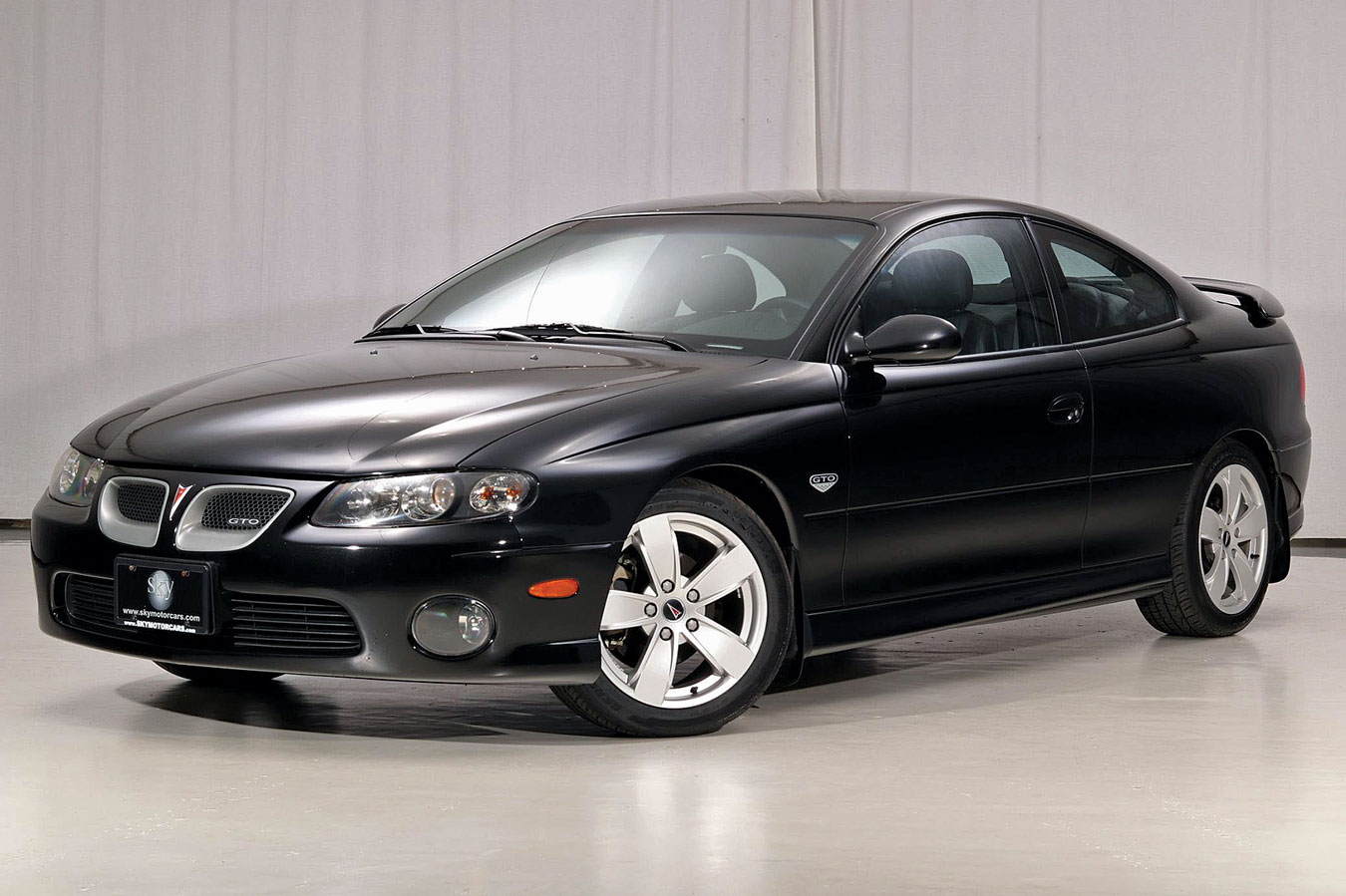
The 2003 model year was a rotten time to be a Pontiac enthusiast. Following the discontinuation of the longstanding F-body Firebird (and its Chevy Camaro twin) after the 2002 model year, Pontiac’s “We Build Excitement” slogan was no longer stated in the correct tense. With the Solstice and G8 still years out, the supercharged front-wheel-drive Grand Prix GTP was the brand’s sole model able to claim even a modicum of performance.
It’s baaack
Once again, thank goodness for Bob Lutz. After reading a warm review of GM’s Australia-only Holden Monaro in Car and Driver, the General Motors exec nabbed one for a test drive during a business trip in Oz. He left impressed and motivated to bring the sleek, streamlined Holden to power-hungry Yanks under a resurrected Pontiac GTO nameplate.
Of course, this took longer than anticipated, as was customary at GM. By the time the new GTO slid into dealers for the 2004 model year, the smooth, soap-bar lines of the three-year-old Holden were criticized as bland and uninspired, particularly when marketed as the revival of a muscle-car legend.
The new GTO’s mechanical bona fides were less contested. The car debuted with the legendary 5.7-liter LS1 V8, capable of smoking its skinny 245-sectional rear tires with a stout 350 horsepower and 365 lb-ft of torque through either a 6-speed manual or 4-speed automatic transmission. Performance was solid (but not exceptional) for the era, with a 0–60-mph time of around 5.3 seconds and a quarter-mile run right at 14 seconds.
Good gets better
For 2005, the GTO received a 6.0-liter LS2 heart transplant from the all-new C6 Corvette. This boosted output to a neat 400 hp and 400 lb-ft, and briefly made the 2005 GTO the most powerful muscle car in production. The 0–60 mph time dropped into the high-four-second range, with quarter-mile sprints dipping into the mid-13s.
New hood-mounted air intakes, a revised rear bumper and a new exhaust system differentiated it from the lesser LS1 GTO from 50 feet, but enthusiasts still yawned at the lozenge profile. Nevertheless, the GTO continued through 2006, finishing production with “just” 40,757 sold over three years, 15,740 of which carried the 5.7-liter LS1.
The benefit of age
Nearly 20 years on, the 2004–06 GTO is a good buy. Regardless of engine, these Aussie Goats are quick, torque-rich coupes that make all the right sounds. Compared to the contemporary Mustang — and especially the earlier F-body Camaro/Firebird — it’s better built and nicely outfitted, with a standard leather package that extended to the seats, stitched steering wheel, shifter and handbrake.
Dynamically, the GTO moves like a Corvette in a fat suit. Independent suspension trades traction for refinement; hard launches are rewarded with excessive wheel hop, but a relatively long wheelbase makes it a comfortable high-speed tourer.
The drivetrain is as bulletproof as you’ll find, the LS’s legendary reliability backed up by a pait of ubiquitous and robust transmissions. Besides the drivetrain, most parts come from Australia, so availability and cost is average at best. This makes it surprisingly easy to total out a GTO, as the cost of a major repair can tip the insurance estimator’s scales.
Suspension is the GTO’s mechanical weak point. Listen for rubbing, popping and clunking. You may notice a slight sag in the rear of stock examples thanks to an aggressive strap-down setup during shipment to the U.S. Also, a worn driveshaft carrier bearing is a good indication of past abuse.
Inside, painted plastic cabin trim is prone to wear, and leather seats turn rock-hard and split their seams without proper care. Minor electrical gremlins aren’t uncommon, but usually nothing more than an occasional glitch in the display or finicky traction control.
Goat herd hierarchy
If you’re shopping, there aren’t many options to consider outside of a larger wheel choice and uncommon “Special Appearance Package” (SAP) on later cars. Do look for special, low-volume colors like single-year Cosmos Purple (2004) and Spice Red (2006). These cars are still relatively undervalued, but prices are starting to creep up. As you’d expect, low-mileage, original 6.0s with a manual transmission attract the biggest bucks.
Expect to pay between $22,000 and $30,000 for a clean, well-documented manual 6.0 and about $5,000 less for a 5.7. Drivetrain modifications either add or subtract from value, depending on quality, execution and documentation. If you’re on a tighter budget or want a daily driver, don’t be afraid of higher-mileage cars. LS engines are long lasting, and there are plenty of driver-quality GTOs to be had around $15k–$20k. ♦